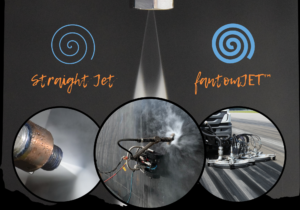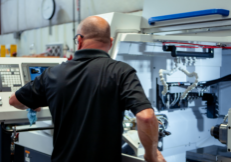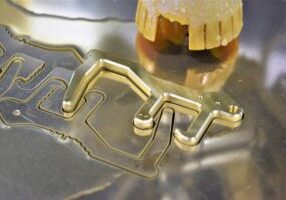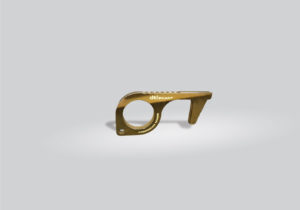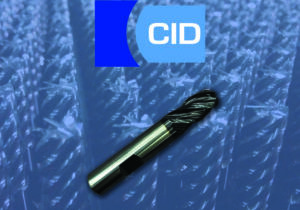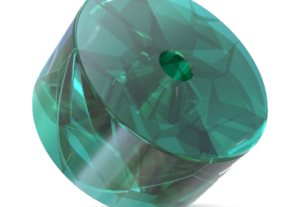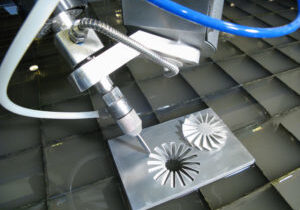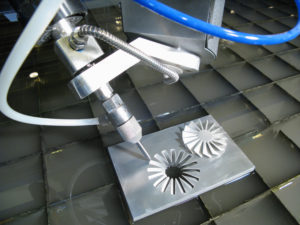
Waterjet Maintenance and Upkeep: 10 Tips to Keep Your Operation Running Smoothly
Waterjet cutting is one the cleanest and most effective ways to cut through materials. Using a mixture of high-pressure water and the aid of abrasive jewels, the stream is strong enough to cut through steel. A water jet isn’t something you simply plug into an outlet and replace it in its box when you are finished. First and foremost because they often require industrial levels of electricity – up to 250amps to get started and 50 to maintain production! However, a waterjet is part of a very precise system including a high-pressure pump, a system to keep the nozzle exactly where it needs to be, tanks to catch any wasted water and the system to feed the abrasive to the tool. Just like any well-oiled machine when one part starts to break down it can cause a ripple effect on the other parts. It is important to observe and maintain your waterjet to ensure long-lasting performance.
Set a Maintenance Schedule and Stick to It
In general, the higher pressure you use with your waterjet cutter, the more often you should dedicate time to maintaining the system. As you develop a system for checking each part of the machine you’ll find, when you keep the parts clean and well taken care of, the overall system will need less maintenance to function as you intend it to. Check with the manufacturer for guidelines on how often each part should be replaced and what kind of service plans are offered for repairs. Many manufacturers and third-party representatives run waterjet maintenance courses. Some are as short as a few hours and others last a few days. Depending on your starting level of understanding machining and machine maintenance, choose a course that is right for you and your team.
Get to Know the Parts and Components of Your Waterjet
If you are ordering parts from different vendors it could start to get complicated keeping everything in check. It is a necessary evil. Each valve, seal, pump, line and tiny component has a name and a place among the system. DTI offers a variety of services to support our customers to ensure the best support from beginning to end. Initially, it may seem like an unnecessary cost yet for all of your questions and concerns the DTI team is here for you. Working with the manufacturer, DTI can provide you with all the documents you need, help to schedule projects, customize delivery, and mechanical assembly, all with a skilled engineering team at your disposal. You will have a one-on-one opportunity to review the set-up of your water jet, be introduced to each part and mechanism of the system and understand how it works.
Don’t Let the Water Quality Slip
If you’ve got hard water in your home or factory you have a problem. Hard water can cut the life cycle of most water jet parts nearly in half. Water that is carrying particles through it can degrade the materials throughout the system and collect on the top of the abrasive jewel resulting in a less efficient cut. Even worse, these tiny particles can cause a misdirection of the cutting stream so that it starts breaking down the mixing tube, destroying it rather quickly.
Your water should have less than 100 parts per million (PPM) of total dissolved solids. If the incoming water tests show a number higher than that it’s time to treat it. Depending on the height of the PPM level you will need to treat the water system with a water softener, invest in a reverse osmosis system or install a water recycling system. Find out which is right for your workplace and get it taken care of before you ever install your new waterjet system. You can avoid the problem before it even starts.
Examine the Cutting Head
The cutting head is the computer-controlled multi-axis that permits angled cuts and precise vertical cuts. It is important to log a number of hours the cutting head is used and compare that to its performance level. Clear-cut signs of a problem are inside cuts that are larger than intended or outside cuts that are smaller than intended. The nozzle can become clogged if you are using too much abrasive for the orifice diameter, if the nozzle is contaminated or if it hits the cutting surface. Breaking can also occur due to unexpected impact with the cutting surface or if it is mishandled. Replacement usually takes anywhere from 5 to 30 minutes.
Clear the Mixing Chamber
The mixing chamber is where the magic happens. In the mixing chamber, the water stream sucks the abrasive. In this chamber, DTI’s diamond jewel orifice, as the hardest known material on earth, becomes a great source of precise power. The wear and tear on this chamber happens naturally over time and thankfully doesn’t differ depending on the abrasive chosen. Take a few moments to check the mixing chamber every day. You want to make sure it is properly aligned and free of debris. Most chambers can last about 500 hours but premature replacement may be necessary due to clogging and misalignment.
Avoid Contamination to the Jewel Through the Water Nozzle
The jewel is what gives the water stream its true power. Rubies, sapphires, and diamonds with a tiny orifice diameter are set inside the nozzle. The water passes through this orifice and increases its speed. The diameter of the orifice expands naturally over time. Rubies and sapphires usually last between 40 to 80 hours and for diamonds, up to 800 hours. The price may be an initial factor to some yet the costs are quickly offset thanks to the reduction in machine maintenance time due to the long life of the diamond technology.
If you start to notice a poor edge quality on your cuts, that is a clear indication of poor jewel quality. There could be a presence of hard water, the breakdown of high-pressure tubes or a faulty filter before the cutting head. Investing in an ultrasonic cleaner can help to keep the water nozzle clean and increase the longevity of the system.
Check the Water Flow Value
The pneumatic valve is what opens and closes to control the water flow during the cutting process. When this value starts to break down, just like any other value, the seal is broken and leaks are abundant. Check the system to make sure the surrounding areas are dry before firing up the machine to ensure no water is dripping through when the waterjet is turned off. If you do need to replace it, most valves cost between $100 and $200 and require 15 to 30 minutes to replace.
Replace the Lines and Fittings When Needed
Typical lines and fitting can last for up to 2,000 hours of work and they naturally wear down over time. Premature damage comes from poor water quality, spikes in water pressure, unnecessary twisting and bending of the lines, inconsistent water streams. Depending on the amount of output from your shop, you might consider a pre-threaded high-pressure line. While they normally take 15 to 30 minutes to replace, they can be a nuisance to thread properly. If your shop doesn’t run constantly and you find you only replace the lines and fittings twice a year, opt for the slightly more expensive pre-threaded option to save yourself the hassle.
Double-Check the Small Items
When it comes to waterjet technology the truth is, big or small, all of the parts play an important role in successful production. Make sure parts such as hand valves, elbows, and other connectors are all present and accounted for throughout the waterjet system. The final filter is located right before the cutting head in the water path. Your filter is your last line of defense against hard water and random debris from collecting and destroying your abrasive jewel. Like car filters, depending on the design, you can either clean the filter out or simply replace it. Most other valves and connectors will last for 1,000 to 2,000 hours before needing to be replaced.
How’s the Pressure?
The high-pressure pump itself contains main parts that need to be observed and maintained. High-pressure seals, nonreturn and safety relief valves, cylinders, plungers and pressure accumulators are all working in combination with water, air, and oil to work efficiently. Valve and seals keep the used water from contaminating fresh water. Sensors maintain proper pressure for temperature, air volume, and hydraulic oil. Naturally, poor water quality can cause premature damage to the valves and connecting parts.
Most waterjet systems will have special diagnostic software designed to oversee the oil, air and water pressure and some even test the valves for leaks. These systems send clear warnings to the program user to avoid a pump failure.
Fabricators rely on their waterjet and need to understand the process intimately. With a little training and guided practice, maintaining a waterjet is possible. Of course making a call to a technical support line and requesting service is also a viable option when you are stuck on something. By tracking your production hours and recognizing the limits of each component in your machine you are off to a great start. The longer you are in the business, the more practice you will have replacing each valve or nozzle when needed and properly recognizing the warning signs. Your machine will constantly communicate with you — all you have to do is pay attention.
Share This Story, Choose Your Platform!


